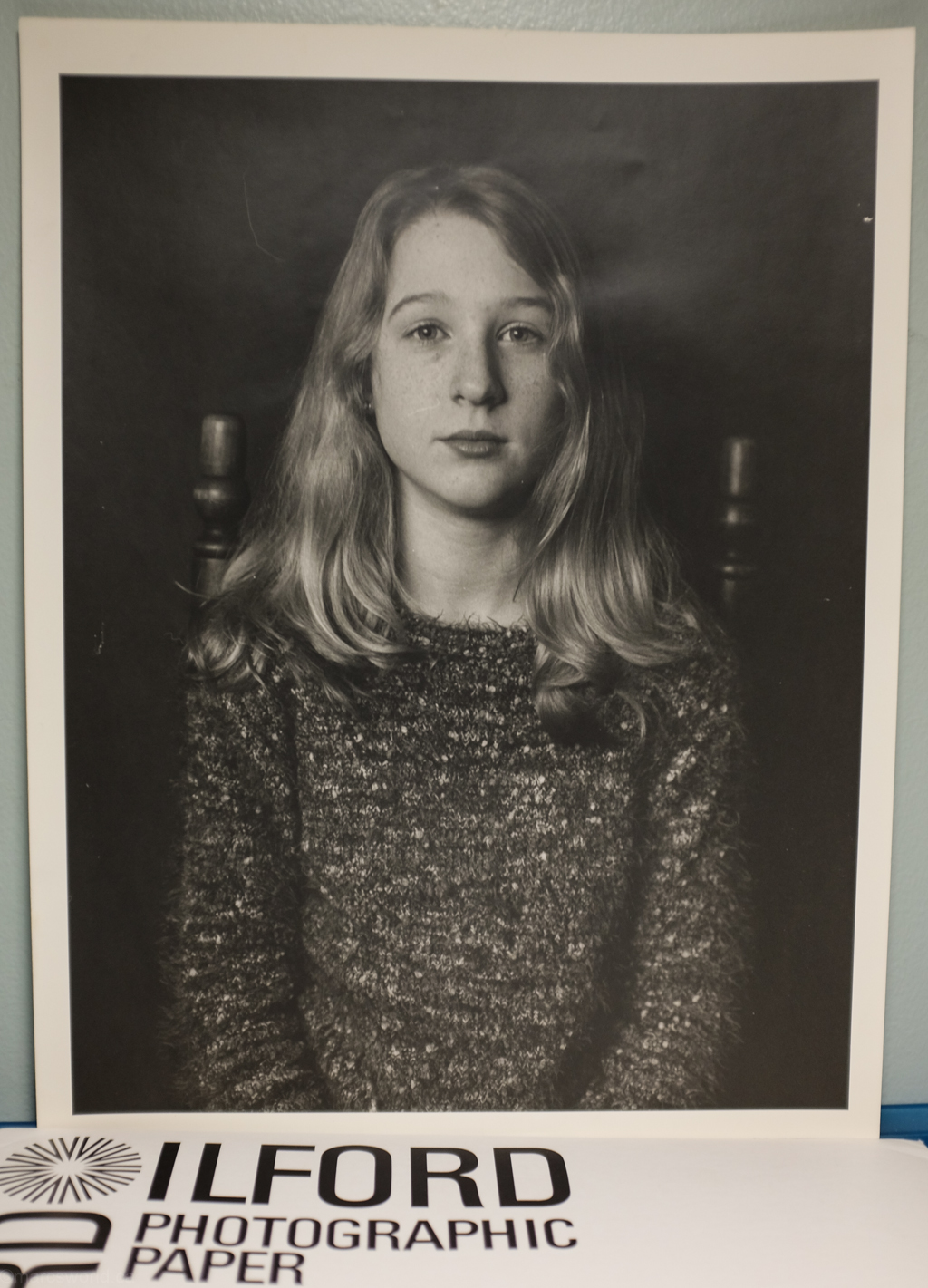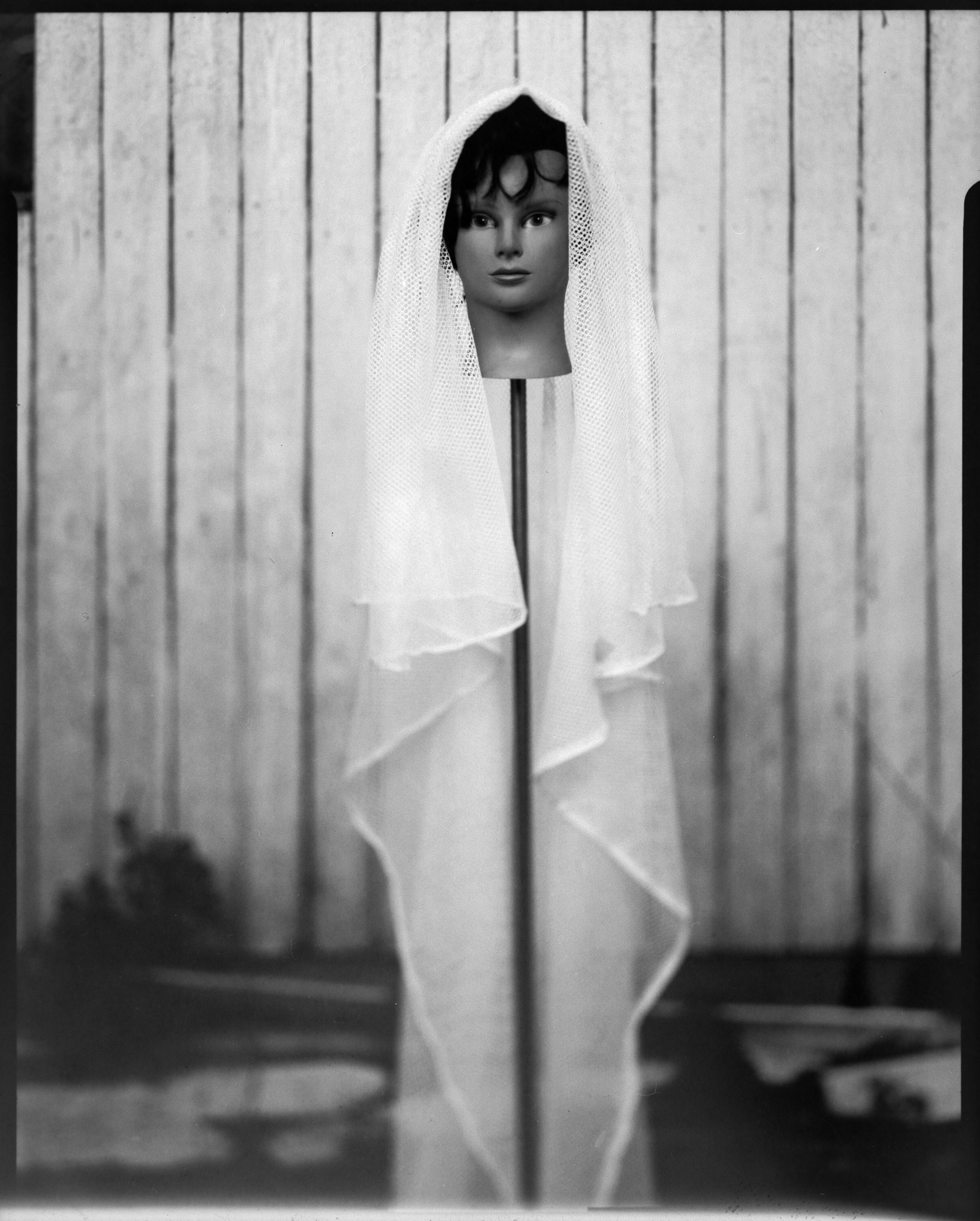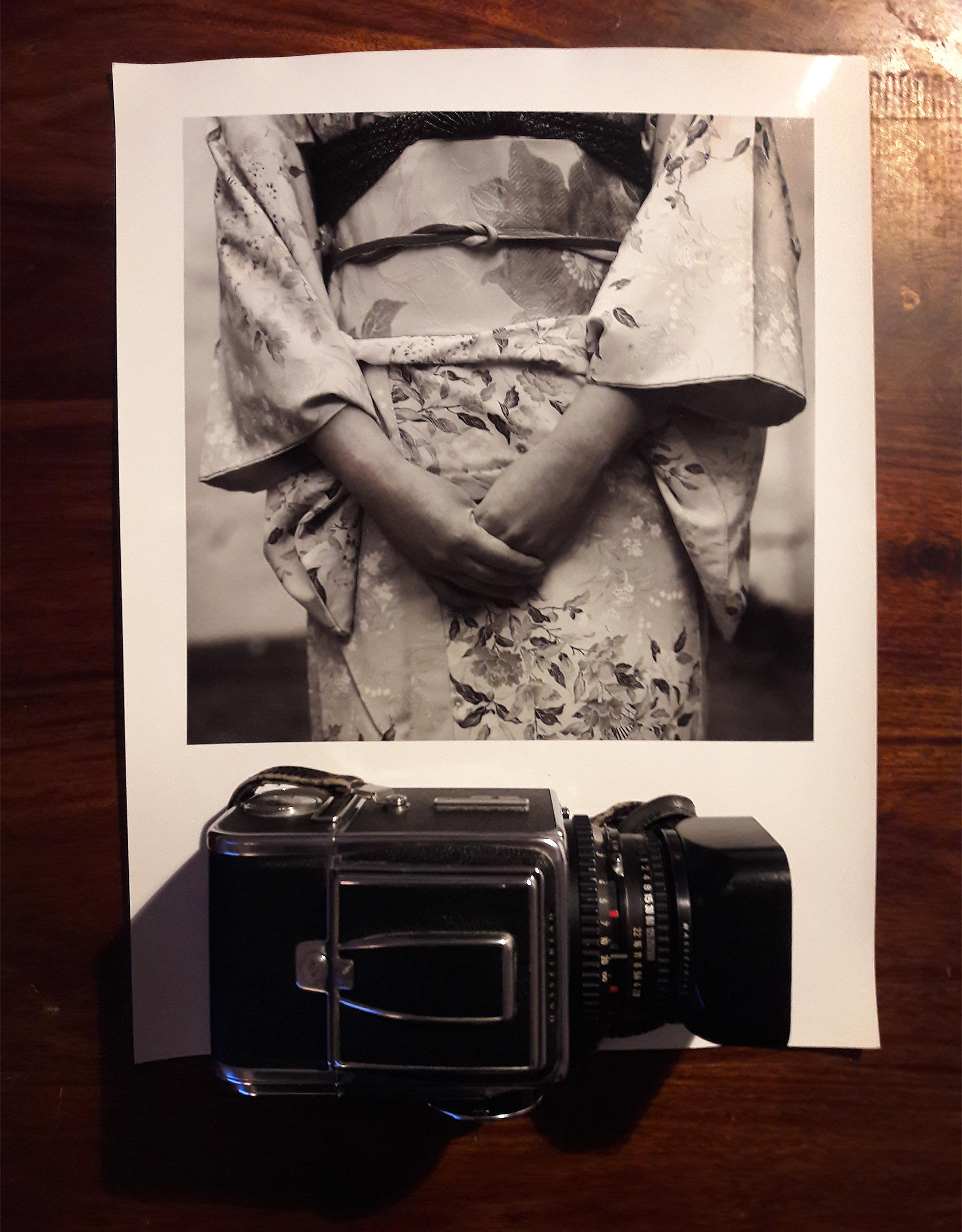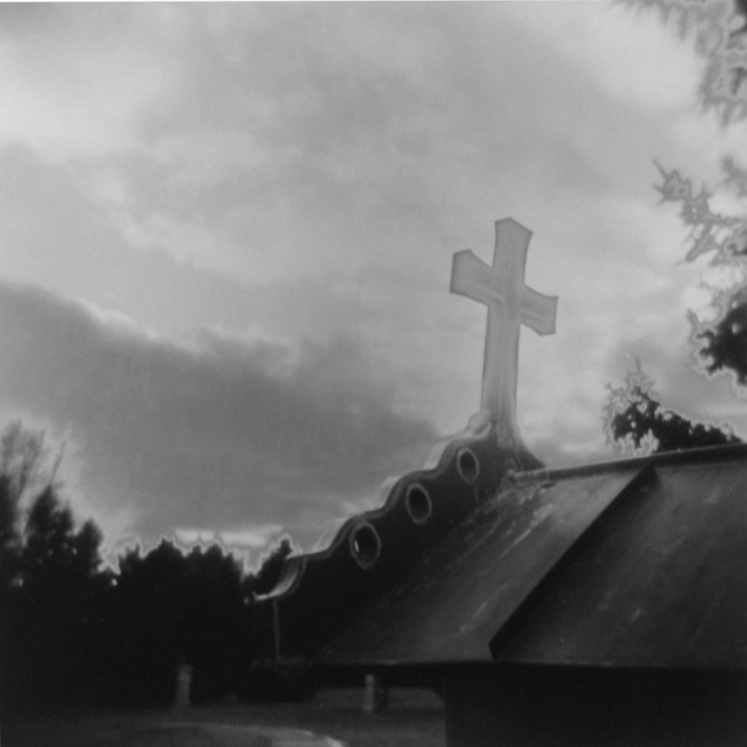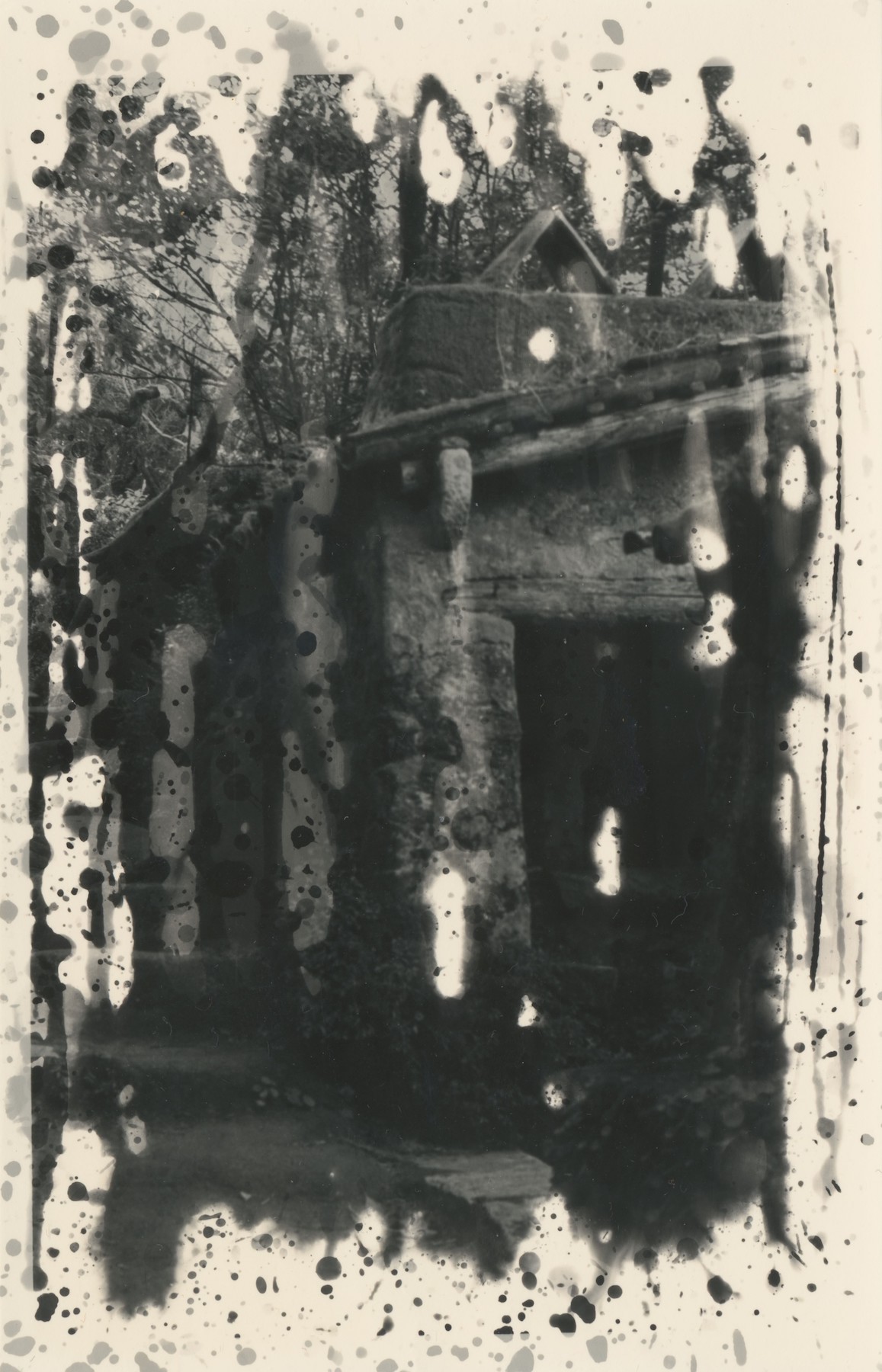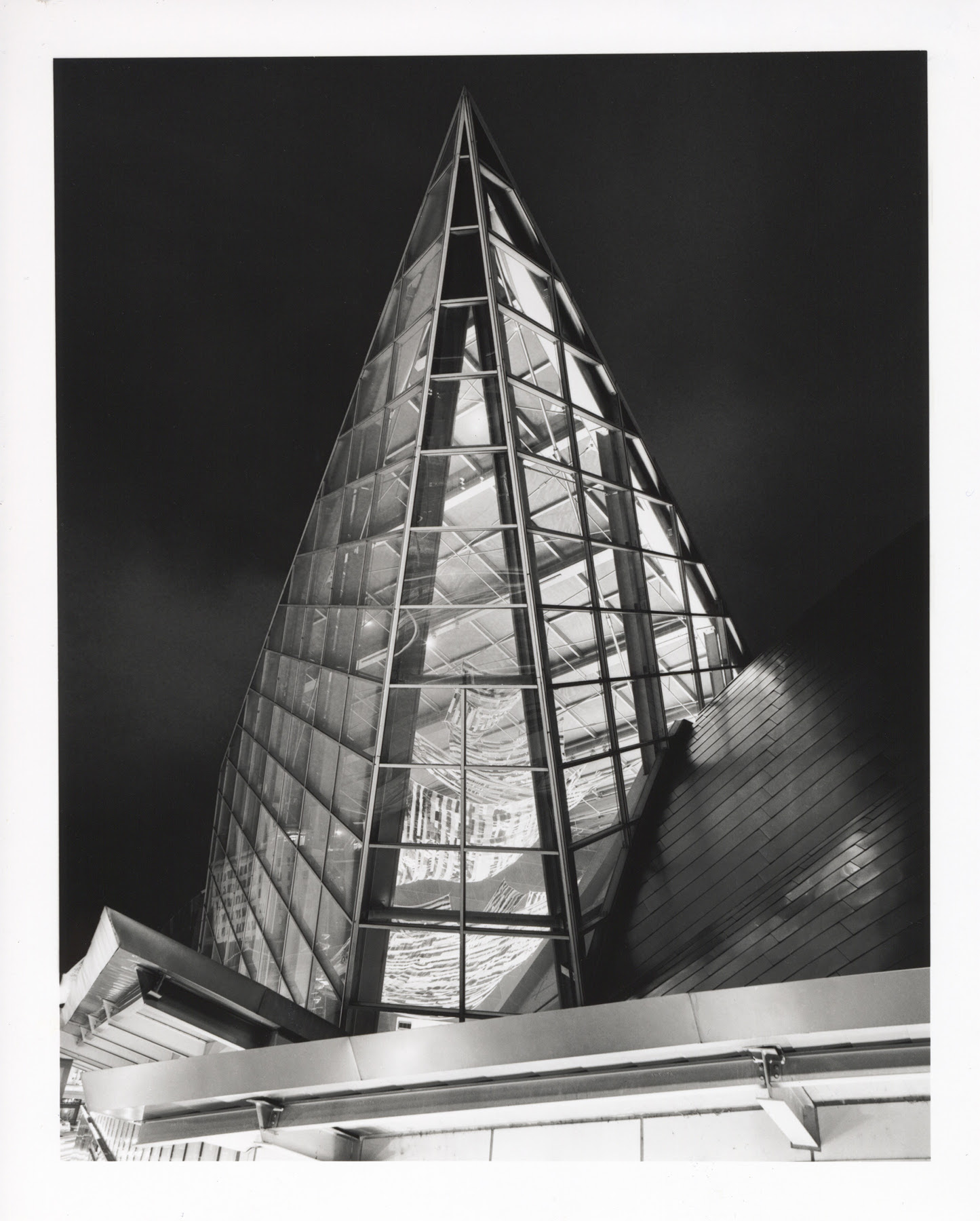...with Ilford Ilfomar A122 Warmtone paper, Grade 3.
Erika II, Ilfomar A122 Grade 3, 1:30 + Burning around the face, dodging in the lighter areas, F8.
It had been a very long time since I had been in the darkroom with any consistency. Many, many years to be honest. I have the equipment, chemicals and paper for a full darkroom in my basement, but find it very difficult to apportion take time time away from my family and strictly for myself. Those of you that regularly work in the darkroom know you need a good 2-3 hour stretch at least once or twice a week to make any headway and improve your technical skills. And, while I have the equipment I haven't dedicated the space needed. We live in a small house and with 4 kids, we need all we have.
Since I was not getting anywhere with my home darkroom, I decided to enroll in a part time darkroom course at the School of Photographics Arts (SPAO), one of the last great film photography schools in Ottawa. (, I would highly recommend SPAO to anyone in the area - they offer quality courses for a wide range of interests.) I felt this course would re-acquaint me with my darkroom skills and perhaps provide the opportunity to learn new techniques from my peers.
I had some 11x14 Ilford paper acquired in an Ebay purchase a few years ago, that I had been saving “for special” and thought this would be the perfect time to use up the 30 odd sheets in a meaningful way. I also had a range of medium format negs that I thought would be appropriate for the paper. They were mostly formal portraits taken over the years, a few landscapes and a few street shots. I was all set.
Erika I, Ilfomar A122 Grade 3, Thin neg, 1:45 approx exposure @ F8.
Information about it on the innernets is spare at best, but I did find this useful reference
“A final graded chloro-bromide called ‘Ilfomar’ came from Ilford’s French factory in 1973, and sank without trace within a couple of years.
Chloro-bromide paper, generally speaking, has characteristics intermediate between bromide and chloride. With a speed slower than bromide, but faster than chloride, it will produce a warm-brown tone that can be influenced considerably by exposure and development.”
As well, here is a pretty sparse internet image search of the paper, and I found one photographer of note who used it, David Hamilton.
I’d also never worked with graded paper, and neither had our classroom instructor, so we were doubly vexed as we didn't even realize it WAS a graded paper until our second session. The label on the paper was cryptic at best. As an aside, and as you may correctly surmise, graded darkroom papers were used as opposed to variable contrast darkroom papers and contrast filters. Using contrast filters on this graded paper had little to no effect other than to extend the exposure time.
Landscape image, HP5+ correctly exposed, 1:10 exposure time, F8.
Once I had gotten over trying (and failing!) to use contrast filters, I was stoked to get to work. The next 8 - 3 hour sessions using the paper were a wonderful blur of test strips, test images, dodging and burning and masking processes. The paper was surprisingly responsive for paper produced in the early 70’s and reacted well to subtle changes in time, and dodging / burning. The final results for these first few images also had a wonderful warm tinge to them, not a sepia but more of a cream colour, when compared to bright white. Portraits had a real warmth and presence;for this application, the paper was ideal. Landscape or “street” images did not do the paper justice, so my planned images of that subject matter were quickly axed . The portraits were beautiful, for 40+ year old paper. Even my instructor was a bit shocked and started to covet my paper.
In the end, I was able to produce a wonderful range of portraits on some very special paper, the likes of which I will probably never be able to use again. Ebay and Craigslist searches have yielded no results, but if anyone reading this ever comes across some Ilfomar let me know. I also learned some very valuable darkroom skills regarding the use of graded paper, namely patience and the subtle evaluation of an image for dodging / burning, which i found was of utmost importance for graded paper. I also added to my karma bank by gifting the last 8 sheets of 11x14 plus numerous unexposed test strips to my instructor, a young but dedicated and talented photographer just starting her career. All in all a very rewarding 9 weeks in the darkroom. If you ever have the opportunity to buy and use older obscure photo paper, take the chance, you may be surprised at your results.
I’d like to get a conversation going about this topic, so I’m going to invite you, in the comments below, to both discuss as well as upload an image on paper you use or like, for some honest evaluation. As well, feel free to offer constructive criticism on the images I’ve posted. Let's really try to get something going. My commitment to you will be to keep replying as long as comments are posted.
SUBMIT
Every week the FSC features an article with a Curated Photostream that is open to all. You may only submit one (1) photo and it *must* be a jpeg file and no larger than 20 MB. Please title the file "Title_Camera_Film_YourName.jpg" so that we may properly credit you if your photo is selected. Remember to check our Submit page to see all currently open photostreams.
Next week will be curated by Lucy Wainwright. For this photostream, she would like you to consider this quotation from 13th C poet and scholar Rumi. "Wherever you stand, be the soul of that place." You may submit your image here.
My next curation is February 19 and I have no specific theme this time around. You may submit your image here.
CONNECT
I'm Film photographer Marc Nagainis and am based in Ottawa, Canada. You can see more of my work on my website . I'll be back around in a while, as soon as i can figure out another topic I want to write about.






